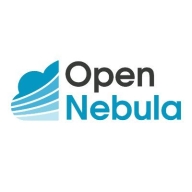

IBM Spectrum Computing and OpenNebula are competitors in cloud computing and resource management. IBM Spectrum Computing has the upper hand in scaling capabilities and workload management, while OpenNebula shines with its open-source flexibility and customization options.
Features: IBM Spectrum Computing offers dynamic resource allocation, integration with existing IT infrastructure, and expansive workload management capabilities. OpenNebula provides open-source flexibility, supports various virtualization platforms, and is easy to customize, making it highly adaptable to different organizational needs.
Room for Improvement: IBM Spectrum Computing could work on reducing complexity and enhancing user-friendliness, as well as simplifying the integration process. It also might benefit from a more transparent pricing structure. OpenNebula can improve by offering more comprehensive technical support, optimizing initial setup time, and enhancing its scalability for large-scale deployments.
Ease of Deployment and Customer Service: IBM Spectrum Computing is streamlined for integration with enterprise-grade systems and provides robust customer support services. OpenNebula's deployment might take longer due to its open-source nature, and its community-driven support requires more in-house expertise compared to IBM's structured support offerings.
Pricing and ROI: IBM Spectrum Computing has higher setup costs but offers a good ROI for large-scale environments with its advanced features. OpenNebula offers lower initial costs, presenting a cost-effective solution for businesses focused on customization. The primary consideration is whether the organization requires a scalable solution or a highly customizable infrastructure.
| Product | Market Share (%) |
|---|---|
| OpenNebula | 5.7% |
| IBM Spectrum Computing | 1.0% |
| Other | 93.3% |


| Company Size | Count |
|---|---|
| Small Business | 3 |
| Midsize Enterprise | 1 |
| Large Enterprise | 6 |
| Company Size | Count |
|---|---|
| Small Business | 7 |
| Midsize Enterprise | 6 |
| Large Enterprise | 3 |
IBM Spectrum Computing uses intelligent workload and policy-driven resource management to optimize resources across the data center, on premises and in the cloud. Now up to 150X faster and scalable to over 160,000 cores, IBM provides you with the latest advances in software-defined infrastructure to help you unleash the power of your distributed mission-critical high performance computing (HPC), analytics and big data applications as well as a new generation open source frameworks such as Hadoop and Spark.
OpenNebula provides the most simple but feature-rich and flexible solution for the comprehensive management of virtualized data centers to enable private, public and hybrid IaaS clouds. OpenNebula interoperability makes cloud an evolution by leveraging existing IT assets, protecting your investments, and avoiding vendor lock-in.
OpenNebula is a turnkey enterprise-ready solution that includes all the features needed to provide an on-premises (private) cloud offering, and to offer public cloud services.
We monitor all Cloud Management reviews to prevent fraudulent reviews and keep review quality high. We do not post reviews by company employees or direct competitors. We validate each review for authenticity via cross-reference with LinkedIn, and personal follow-up with the reviewer when necessary.